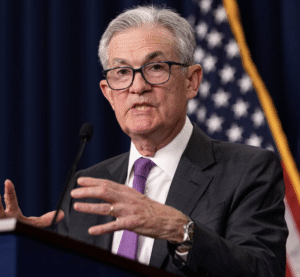Introduction to Trump Tariff Formula
The Trump Tariff Formula has redefined the U.S.’s approach to trade policies, targeting countries with significant trade deficits. This strategy, unveiled as part of President Donald Trump’s sweeping tariff policy, calculates reciprocal tariffs based on a simplified mathematical formula. Designed to address trade imbalances, the formula has sparked debates over its effectiveness and potential consequences for global trade.
How Trump’s Tariff Formula Works
The formula used by the Trump administration is surprisingly straightforward:
- Trade Deficit Focus: The formula divides the U.S. trade deficit with a country by the total exports from that country to the U.S.
- Reciprocal Tariffs: The resulting figure is halved to determine the tariff rate, with a minimum baseline of 10% applied universally—even for countries where the U.S. has a trade surplus.
- Elasticity Factors: Additional terms like ε and φ—measures of elasticity—are included but effectively cancel each other out, simplifying calculations.
For example:
- A country with a $100 billion trade deficit and $200 billion in exports to the U.S. would face a 25% tariff ($100B ÷ $200B ÷ 2).
This formula has led to varying tariff rates across nations, with some countries facing rates as high as 50%.
Impact of Tariffs on U.S. Trade Deficit
The Trump Tariff Formula directly targets nations contributing to the U.S.’s trade imbalance:
- China: Facing one of the highest tariffs at 54%, due to its significant trade surplus with the U.S.
- European Union: Subjected to a 20% tariff under this formula.
- Other Nations: Smaller economies like Saint Pierre and Miquelon have been hit with steep tariffs (50%) despite minimal trade volumes.
While these tariffs aim to reduce the trade deficit and protect domestic industries, they also risk increasing costs for American businesses reliant on imports.
Global Reactions to Trump’s Tariff Strategy
Countries affected by these tariffs have responded in various ways:
- Retaliatory Measures: Nations like China and the EU have imposed counter-tariffs on American goods, targeting industries such as agriculture and manufacturing.
- Supply Chain Disruptions: The tariffs have disrupted global supply chains, particularly in Asia, where manufacturers face higher costs.
- Diplomatic Tensions: Many trading partners view these tariffs as unilateral and unfair, straining international relations.
Economic Consequences of Reciprocal Tariffs
For the U.S. Economy
- Increased revenue from tariffs could offset tax cuts but may lead to higher consumer prices.
- Domestic industries might benefit from reduced competition but face challenges sourcing affordable raw materials.
For Global Trade
- Retaliatory tariffs and reduced trade volumes could slow global economic growth.
- Smaller economies disproportionately affected by high tariffs may struggle to maintain export levels.
Expert Opinions
Economists argue that while reciprocal tariffs may seem fair on paper, they risk creating inefficiencies and backlash that could harm both domestic and global economies.
Conclusion
The Trump Tariff Formula represents a bold attempt to address longstanding trade imbalances through simplified math-based calculations. While its focus on reciprocal tariffs aims to protect American interests, its broader implications for global trade remain uncertain. As nations adapt and respond, the future of international commerce under this policy will be closely watched.
For more insights into U.S. trade policies and their impact on global markets, explore related articles on InfoDaily24.com.













